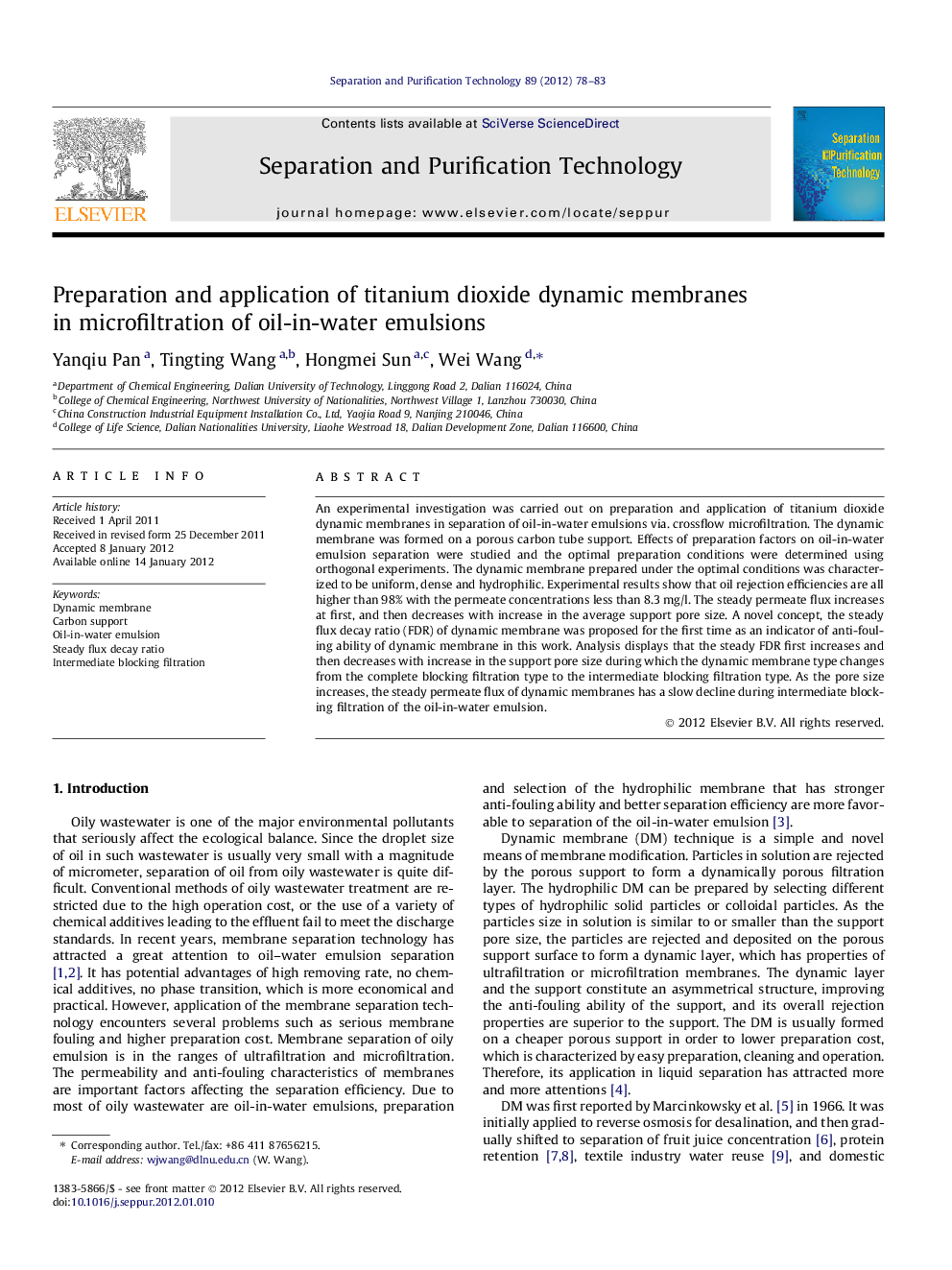| Article ID | Journal | Published Year | Pages | File Type |
|---|---|---|---|---|
| 642254 | Separation and Purification Technology | 2012 | 6 Pages |
An experimental investigation was carried out on preparation and application of titanium dioxide dynamic membranes in separation of oil-in-water emulsions via. crossflow microfiltration. The dynamic membrane was formed on a porous carbon tube support. Effects of preparation factors on oil-in-water emulsion separation were studied and the optimal preparation conditions were determined using orthogonal experiments. The dynamic membrane prepared under the optimal conditions was characterized to be uniform, dense and hydrophilic. Experimental results show that oil rejection efficiencies are all higher than 98% with the permeate concentrations less than 8.3 mg/l. The steady permeate flux increases at first, and then decreases with increase in the average support pore size. A novel concept, the steady flux decay ratio (FDR) of dynamic membrane was proposed for the first time as an indicator of anti-fouling ability of dynamic membrane in this work. Analysis displays that the steady FDR first increases and then decreases with increase in the support pore size during which the dynamic membrane type changes from the complete blocking filtration type to the intermediate blocking filtration type. As the pore size increases, the steady permeate flux of dynamic membranes has a slow decline during intermediate blocking filtration of the oil-in-water emulsion.
► TiO2 dynamic membranes prepared and applied to oil-in-water emulsion separation. ► Oil rejection efficiencies all above 98% with permeate concentrations below 8.3 mg/L. ► Steady flux decay ratio (FDR) proposed as indicator of membrane anti-fouling ability. ► The larger the FDR is, the more serious the DM blocking degree is.
